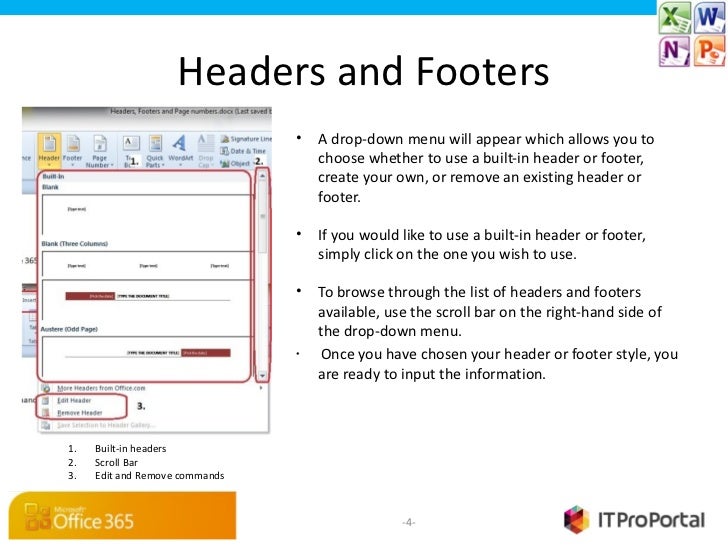

- Header and footer in word document how to#
- Header and footer in word document for mac#
- Header and footer in word document update#
Or, study the complete written tutorial below.
Header and footer in word document how to#
How to Add Headers, Footers, and Page Numbers in Microsoft Word Your Quick Start Guide to Add Headers, Footers and Page Numbers (Video)Īre you ready to learn more about using headers, footers, and page numbers in Microsoft Word? Watch this quick screencast to learn all about Word headers and footers. The steps may differ slightly depending on what version of Microsoft Word you're using.
Header and footer in word document for mac#
Note: I'm on Microsoft Word for Mac version 16.33. So, you and your readers can reap all their benefits. In this article, you'll learn how to work with headers, footers, and page numbers in Microsoft Word. Envato Elements and GraphicRiver are great sources of templates for Microsoft Word. Insert Microsoft Word headers, footers, and page numbers in your document or start with a Microsoft Word template that includes pre-formatted headers, footers, and page numbers. And, if you export your Word Doc into a PDF, you can even make the headers and footers clickable (or hyperlinked) to your website. Branding is another reason to use headers and footers. For example, a glance at the footer can remind them that they’re reading Chapter 16 of The Greatest Novel Ever Written. Headers and footers also help the reader situate themselves in the document. You've got no excuse for not using this useful feature.
Header and footer in word document update#
Imagine trying to find a specific passage in a 250-page document without page numbers! Microsoft Word page numbers update automatically as you add or delete pages. Here are a few good reasons to use Microsoft Word headers, footers, and page numbers: Envato Elements has thousands of Microsoft Word templates available for unlimited downloads. Microsoft Word headers, footers, and page numbers organize the document and make it easier for your readers to navigate. Unfortunately, there is no way around this, short of rewriting a couple of Word commands as mentioned earlier in this tip.Sometimes you've got to make longer documents-such as business reports, school papers, and book-length materials. That means that they can do a Print Preview operation, copy the screen to the Clipboard, and then use their favorite graphics editing program to extract the graphic. There is one caveat to this: if your goal in doing the protection was to keep someone from accessing a graphic, rest assured that if someone can display the graphic on the screen, they can get it. You will need to test this solution in your environment to ensure that the lack of functionality is an acceptable trade-off to the protection offered to your header and footer. When you protect a document in this manner, Word disables some tools so they cannot be used. The rest of the document can readily be changed. Your header and footer information is now protected from unauthorized changes. When you save your document, you can save it either as a regular document or as a template. Protect the document as a form, making sure that the first section (the part before your Continuous break) is the only section that is protected.Create the remainder of your document as desired.Insert a Continuous break on the first line of the document.Set up your header and/or footer as desired.You can do that by following these general steps: Perhaps the simplest answer is to place the header and footer in its own section and protect that section from changes. Such an approach could be a Pandora's Box, with changing one command leading necessarily to the change of another. This means, of course, that your macros effectively replace the existing printer-related commands used by Word. If you like macros, you could develop macros that place the information in the header or footer just before printing. There are several ways to go about protecting this information. For instance, you might want to ensure exact placement of text, a specific text treatment (font, size, etc.), or the inclusion of a graphic. There may be times when you want to place information in a header or footer and have that information protected so a user cannot change it.


 0 kommentar(er)
0 kommentar(er)
